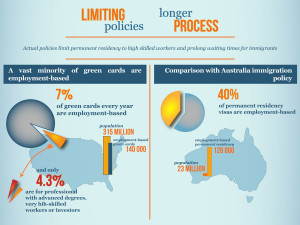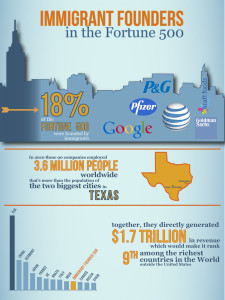We have been writing about these Immigration Reform posts now for over 5 years and it is largely getting tiresome because it an endless stream of idea, proposals and politics and over that time almost nothing has actually been done that change the situation for foreigners or benefits the US economy as a whole.
President Obama in his State of the Union Address on January 28th didn’t devote that much time to Immigration Reform, especially compared to other recent major speeches. The basic message was to get it done and it seems that he is willing to sign on on partial reforms sent to him by the House of Representatives piece by piece or a modified version of the major reform bill passed by the US Senate in the Summer of 2013.
Funnily enough I have always been skeptical of these types of controversial issues passing in election years (this is a midterm election year), however reading between the lines and almost the fact that not much is being said by other side about Immigration almost leaves me quietly confident. It tends to be when politicians are in the media trying to make crazy arguments that nothing seems to get done but when they are quieter bills seem to pass.
These are my expectations on the main proposed changes of Immigration Reform that the Senate already voted on;
- Undocumented Immigrants pathway to Citizenship & Dream Act: I expect a modified version of this to pass largely prohibiting citizenship but giving PR / Green Card status after a period of time to most kids brought to the US by parents without documentation probably with an education or military service type provision
- High Skilled Immigration changes: As most of these changes are largely technical and tend to be agreed upon by both sides I imagine these will pass with increased quotas for the H-1B visa, increased access to Green Cards particularly for STEM graduates and flexibility to hire foreign workers to greater or lesser degree depending on the economic need of the time
- Low Skilled Immigration changes: This is one of the parts of the Immigration bill that has supporters and opponents on both sides and thus may actually be the toughest to pass. Ultimately new work visa types for farm workers, construction, laborers, etc will largely depend on the business side of the Republican party winning out and convincing members of the need to continue to improve perception particularly with Latino voters. Democrat opposition will come largely from the Unions but since they largely signed off on the original version in the Senate bill and the economy has been improving that should still hold true.
- Green Card changes: There are a lot of technical changes here to process, quotas, nationality limits, elimination of the Green Card lottery and clearing the backlog of people waiting many years. Ultimately the main change proposed here is philosophical and moving the US away from an immigration system away from a family first system to a merit and economic first system. This would be more in line with the rest of the developed world’s immigration systems. There are things like putting greater focus on foreign entrepreneurs creating startups in the US and less of relative driven immigration particularly foreign brothers and sisters of US citizens and permanent residents. There is a lot of weird coalitions on both sides in favor of and against these changes and other than the elimination of the lottery and equivalent Green Cards made available to high skilled immigrants in stead, these proposed changes will probably face a tougher path ahead to pass in full

